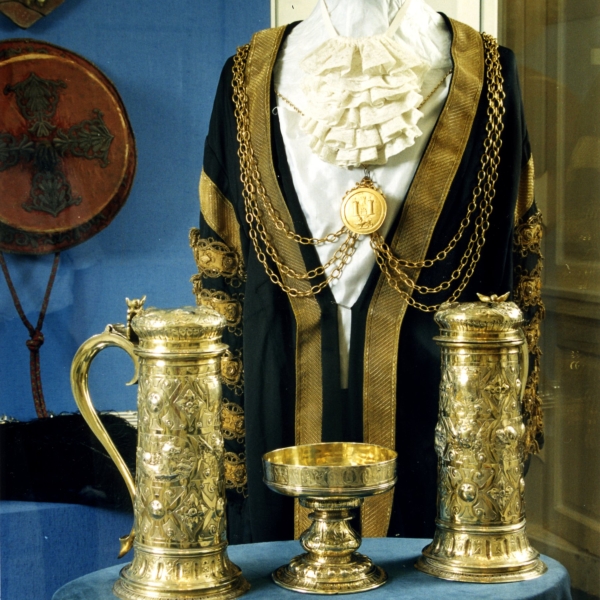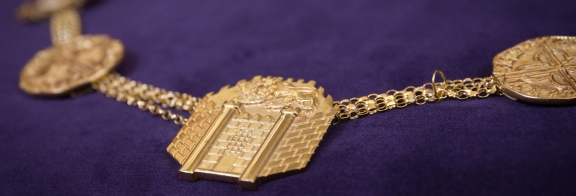Christmas and New Year closure information
Our council offices and phone lines will close at 4pm on Wednesday 24 December and reopen at 9am on Monday 5 January 2026.
See our service arrangements for customers during this time.
Norwich is home to one of the finest collections of civic regalia in the UK. This impressive collection includes ceremonial swords, maces, and ornate chains worn by the Lord Mayor and Sheriff during official events.
Back in the Middle Ages, the monarch held all political power, and the sword and maces weren’t just symbols - they were actual weapons. The maces, for example, were used by royal guards to clear crowds.
In 1404, King Henry IV granted Norwich a special charter, giving the city more control over its own affairs. From then on, the elected Mayor and Sheriffs were allowed to carry a sword and maces bearing the King’s arms - symbols of royal authority and civic pride.
These historic items, especially the magnificent sword and maces, are carefully preserved and now housed at the Norwich Castle Museum.
In 1757, a wealthy dyer named Matthew Goss gifted beautifully crafted chains to the city. Since then, generations of Lord Mayors and Sheriffs have worn them at major civic events.

Because of their age and importance, these chains aren’t suitable for everyday use. So in 2016, new chains were commissioned for regular civic duties, while the original ones are reserved for special occasions like Mayor-Making.
Local jewellers Sonkai were chosen to design the new chains. Their creation beautifully blends Norwich’s rich history with its modern identity. The design features 18 unique motifs, each telling a story about the city’s culture, heritage, and achievements.
These new chains are versatile - they can be worn with robes, daywear, or evening attire, and are inclusive for all genders. The crests of the Lord Mayor and Sheriff remain central to the design.
Funding for this project was generously provided by the Norwich Freeman and their Town Close Estate Charity.

Each motif on the new chains represents a key part of Norwich’s identity:
To learn more about the artists behind the new civic chains, visit the Sonkai website.